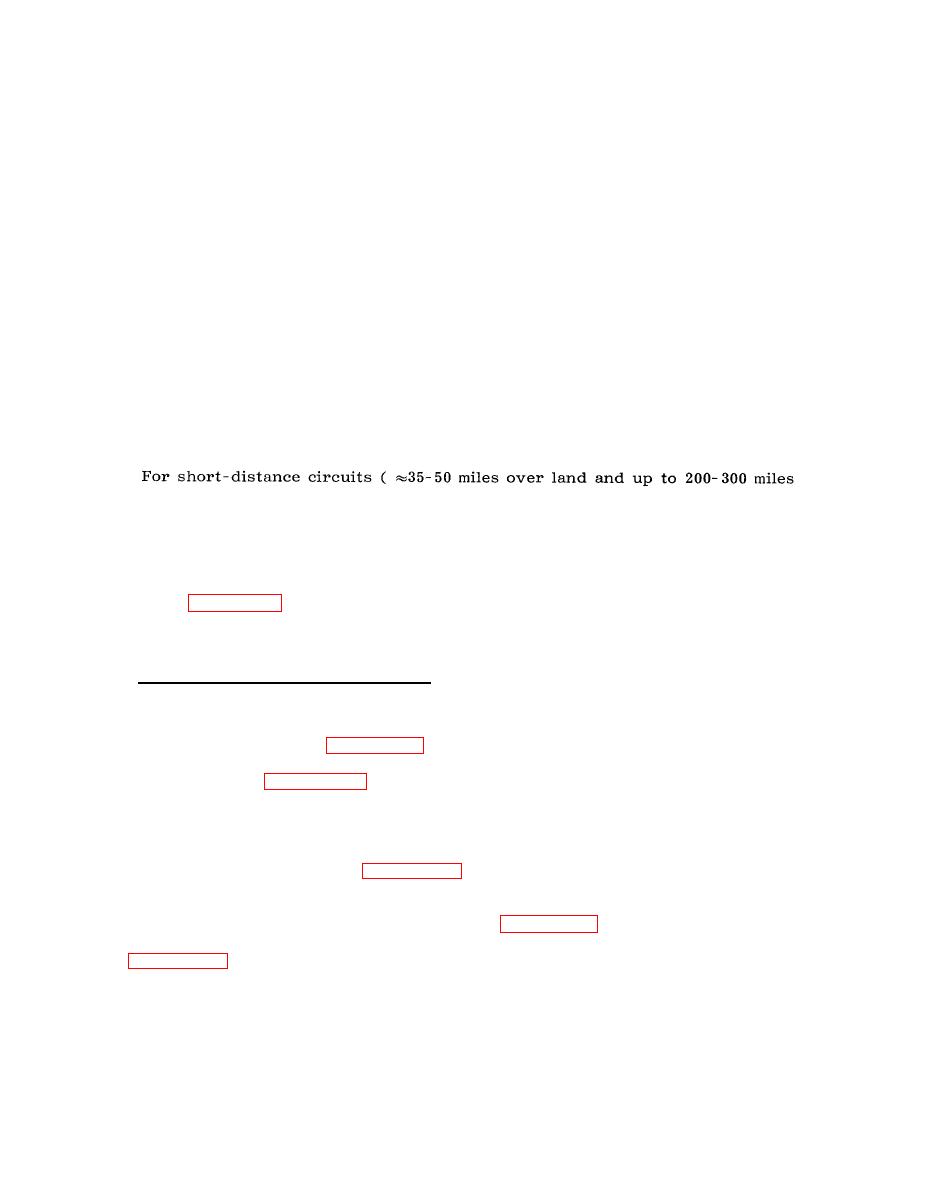 |
|||
|
|
|||
|
|
|||
| ||||||||||
|
|  TM 11-5820-917-13
b. The electron concentration in the F-region usually changes slowly. Thus,
propagating frequency bands generally vary in time periods measured in many tens
of minutes. Sporadic E, on the other hand, can change rather markedly in just a
few minutes and must be treated very carefully.
c. Experimental measurements confirm that radio propagation is essentially re-
ciprocal. That is, given identical equipment at both ends of a circuit, frequencies
propagating in one direction will propagate in the opposite direction. There are
some variable effects created by the earth's magnetic field which primarily affect
east - west circuits, but these are secondary in nature.
d. Because of the earth's magnetic field, RF electromagnetic energy under-
goes a "splitting" of its electrical and magnetic fields into waves having both
clockwise and counterclockwise circular polarization. The result is that the
energy in, say, a one-hop F-mode can actually propagate via two different paths
with different time delays and show as two traces on the RCS-4B CRT display.
The two modes are called "ordinary" and "extraordinary" and are labeled 0-mode
and X-mode. The maximum 0-mode frequency is always less than the maximum
X-mode frequency.
e.
over sea water) surface wave propagation is possible. A vertically polarized trans-
mitting antenna couples radio energy best with the earth's surface, and a verti-
cally polarized receive antenna produces the strongest received signal.
f. Propagating frequencies depend on path length with the maximum propagat-
ing frequency increasing as path length increases up to the 1-hop limit. Thus,
as shown in figure 7-2, the optimum frequency for a short path may be attenuated
for a longer path, while the optimum frequency for a long path may penetrate the
ionosphere at the higher takeoff angle needed to reach the shorter distance.
7-16. A Chirp sounder transmitter emits a continuous "coherent" signal that
increases in radio frequency in a linear manner. The result can be thought of
as a linear ramp as shown in figure 7-3(a). At a given receiver location, the
energy emitted on any given frequency propagates via one or more "modes" with
different time delays. Figure 7-3(a) shows examples for four frequencies.
7-17. Because the Chirpsounder transmitter and receiver involve linear frequency
sweeps without significant phase discontinuities, a properly synchronized trans-
mitter /receiver combination causes the energy in each mode to produce a tone
in the receiver, as indicated by figure 7-3(b). The pitch of each tone is linearly
proportional to the time delay of the mode it represents. The receiver output is
processed by a spectrum analyzer, and the individual tones are displayed as an
"ionogram" such as depicted in the lower right of figure 7-3(b).
7-18. Figure 7-4 shows an example ionogram produced on the CRT of the RCS-4B
receiver. The lower part of the display shows propagating signals vs frequency
and indicates their relative propagating time delay. The maximum observed fre-
quency (MOF) is at 7.6 MHz; the lowest observed frequency (LOF) is at approxi-
|
|
Privacy Statement - Press Release - Copyright Information. - Contact Us |